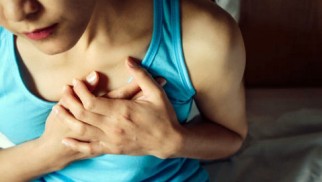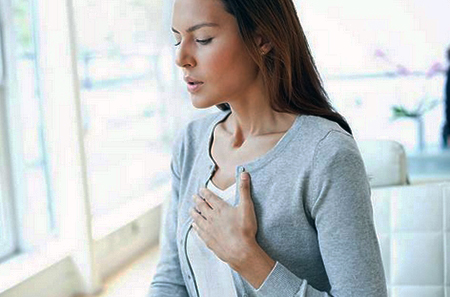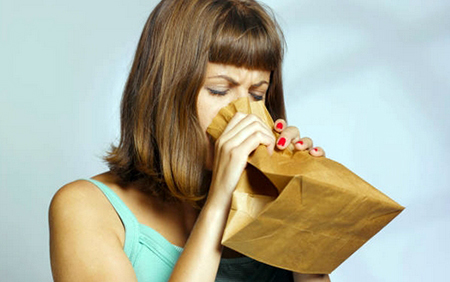Panic disorder: symptoms, causes, and treatment methods


Panic disorder is manifested in uncontrolled and unreasonable panic attacks. It is a very common symptom complex. However, many people who suffer from the disorder are unaware that panic attacks are very manageable and treatable.
Short information about panic disorder
Often, people who experience panic attacks do not even try to see a doctor. There are many reasons, and one of them is the lack of sufficient information about this disease. Some people mistakenly consider panic attacks an incurable mental disorder and fear that treatment by a psychiatrist may negatively affect social status, others underestimate the severity of this disease, trying to come to terms with it, or are treated with folk remedies. But this approach is definitely not the optimal one.
What is panic disorder?
Panic disorder or panic attack syndrome is more common than commonly thought - it affects about 5% of people, and mostly young people aged 20-30 years old. At the same time, women suffer from panic attacks more often than men. Panic as a natural reaction to stress is familiar to many, but why does it sometimes occur “out of the blue”, for no apparent reason?
A panic attack provokes a sharp rush of adrenaline - a hormone that prepares the body to react to a potentially dangerous situation, triggers the mechanism of "flight or fight". The heartbeat speeds up, breathing becomes more intense, which leads to hyperventilation of the lungs and a decrease in the level of carbon monoxide in the blood - it is this reaction that causes dizziness, numbness of the limbs, tingling in the fingers, and sometimes on the scalp. This response of the body to danger is absolutely normal, and a panic attack is just a failure in the system, due to which the "emergency mode" is turned on unnecessarily.
Disease types
Panic disorder is classified into three types:
- Spontaneous panic attack. It appears suddenly, without any noticeable reason.
- Situational panic attack. It occurs in connection to a specific traumatic situation or in anticipation of such a situation. For example, during an exam or immediately before it, during a quarrel or in anticipation of a conflict.
- Conditional-situational panic attack. Often it manifests itself due to the effect of some chemical or biological "activator" of the nervous system - for example, when taking alcohol, caffeine or drugs, with changes in hormonal levels.
Signs of a panic attack
Paradoxically, not all people with panic attacks know exactly what is happening to them. Panic attacks are often confused with heart disease. Their symptoms are actually somewhat similar. A panic attack, or, as it is also called, a vegetative crisis, can begin with chest pains, a feeling of shortness of breath and a rapid heartbeat. Patients often try to relieve these symptoms with heart remedies, but in the event of a panic attack, this usually has no effect.

Typical symptoms of a panic attack also include sweating, chills, tremors, dizziness and a feeling of impending fainting, nausea, a feeling of derealization and depersonalization ("this is not happening to me") and, most importantly, fear that cannot be explained and is very difficult to control. However, you should know that instead of fear sometimes patients during an attack do not panic, but feel melancholy, depression, are tearful or aggressive.
The duration of attacks varies from a few minutes to several hours, averaging 15-30 minutes. The frequency of attacks is from several times a day to 1-2 times a month. Often, panic attacks occur without any external cause, but sometimes a pattern can be traced - for example, attacks occur only on the street or only indoors, while driving, before leaving the house, exclusively alone or, on the contrary, in a crowd.
Panic attacks are not dangerous, but they can make life completely unbearable and over time lead to the development of depression, phobias and severe neuroses - which, in turn, provoke an increase in the frequency of attacks. Panic attacks change a person's behavior - they begin to avoid situations in which this disorder can manifest, become nervous and suspicious, is constantly focused on their sensations and live in fear of a new attack.
Causes of panic disorder
Sometimes they begin after noticeable changes in life (not always bad) or after an experienced stressful situation. Part of the causes of panic attacks can also lie in physical diseases, such as mitral valve prolapse (heart disease that occurs when one of the heart valves does not close properly), hyperthyroidism, hypoglycemia, and others. A panic attack can be triggered by taking certain medications or stimulants, from caffeine to strong CNS stimulants. Finally, panic disorder can be one of the manifestations of depression.
First aid for panic attacks
If you are reading this article, then most likely you yourself or someone from your loved ones are prone to panic attacks. Attacks are very frightening for both patients and bystanders, so it is worth remembering a few simple techniques that help to quickly stop the crisis.

- Respiration regulation. Hyperventilation of the lungs during an attack disrupts the gas balance in the blood, which causes even greater anxiety and shortness of breath. In the first seconds of an attack, it is important to normalize this balance. To do this, you can breathe in a paper bag tightly pressed to your nose and mouth or, in lack of a paper bag, in cupped palms. Breathing should be even and slow. This allows maintaining the carbon dioxide content in the norm.
- Switching/shifting focus. Panic can be dealt with by stopping thinking about it, and the easiest way to do this is to shift your focus. Concentrate on the process, continuing the work that that you’ve been doing, even if it is difficult at first. You can try counting from 100 to 1 or solving arithmetic problems, or talk to someone close to you about a topic far from causing the panic. If you are on the street or in transport, try switching your attention to the surrounding reality: counting passing cars, buttons on nearby passenger's coat, etc. For some, controlled muscle tension helps to distract: tense your fingers, intensively massage your hands, or the auricles - this will smooth out the manifestations of a panic attack.
- Auto-training. Repeat to yourself during the attack that the attack will end in a few minutes, since all these symptoms are not dangerous and do not pose a threat to life, people do not die from panic attacks and do not go crazy.
If a panic attack happened to someone of your loved ones, do not focus on it and do not worry, be calm and confident, take the person by the hands and in an even voice convince them that the situation will be resolved safely. Suggest one of the first aid methods described above and try to hide your worries, even if you feel uncomfortable.
How is panic disorder treated?
It is possible to get rid of panic attacks, but this requires the help of a doctor - after all, the therapy regimen depends on the reasons that caused this disorder. First, you should contact a therapist to exclude the organic causes of the disorder. Additional consultations of an endocrinologist, neurologist, cardiologist and psychotherapist may be required.
Panic attacks can be cured with a combination of medication and psychotherapy.
Panic disorder therapy with medications
There are several strategies in the therapy of panic attacks: first - stopping the panic attack itself; the second is prevention (control) of panic attack and syndromes secondary to panic (agoraphobia, depression, hypochondria, etc.).
- To stop a panic attack, medications and psychophysiological techniques are used. The most effective drugs are benzodiazepines, of which fast-acting drugs are more preferable: diazepam, lorazepam. Medium therapeutic doses are used.
The relief of the attack is achieved a few minutes (15-30) after the administration of the drug. However, frequent (daily) use of these drugs leads to the development of an addictive syndrome, and in the usual dosages, they cease to work. At the same time, irregular intake of benzodiazepines (“take on demand”) and the associated rebound phenomenon can increase the frequency of panic attacks. The psycho-physiological methods of stopping an attack are preferred (see above).

- Stabilizing therapy aimed at consolidating the results (control of panic attacks), restoring the level of social adaptation, overcoming agoraphobic manifestations (expectation anxiety, avoidant behavior) and preventing early relapses (4-6 months) includes the prescription of drugs with an anti-panic effect. Currently, the following anti-panic drugs are preferred: tricyclic antidepressants (TAD), selective serotonergic drugs and monoamine oxidase (MAO) inhibitors.
Tricyclic antidepressants are the first class of medicines that have been found to have a full anti-panic effect. The most commonly used medicines for panic attacks are Imipramine, Clomipramine, Amitriptyline. TAD is the medication of choice in cases of comorbid depressive disorders and severe agoraphobia.
Treatment with TAD begins with low doses (12.5–25 mg/day), then doses are gradually increased to a tolerable level (on average, by 12.5–25 mg for 3-5 days). The average effective daily dose is usually 150-200 mg /day, rarely 300 mg. The first improvement occurs in 2-3 weeks. Sometimes symptoms worsen during the first weeks of treatment. TAD have the wide range of adverse effects (dry mouth, weight gain, constipation, palpitations, feeling of inner tremors) so they must prescribed by a professional who can adequately control the dosage increase noting the negative manifestations in a patient.
Another class of antidepressants widely used in the treatment of panic disorder is selective serotonin reuptake inhibitors (SSRI): Fluoxetine, Sertraline, Paroxetine, and others. The main disadvantage of this group is the occurrence of hyperstimulation (irritability, insomnia, nervousness) during the first 2–3 weeks of treatment and enhanced anxiety and panic symptoms. Initial doses are usually minimal (5 mg of fluoxetine, 50 mg of fluvoxamine, 25 mg of sertraline) and within 2 weeks the dose is brought to an average, and then, if necessary, is increased or remains the same. Subsequently, even with prolonged therapy, the dose does not change. For long-term (maintenance) treatment, these drugs are much more convenient than TAD, due to the absence of anticholinergic and adrenergic action and a possible single dose during the day.

The widespread use of drugs with anti-panic efficacy contributed to an increase in the interictal period, which, in turn, made it possible to conduct adequate psychotherapy. Psychotherapeutic treatment usually begins at the stage of stabilizing (after-treatment) pharmacotherapy and continues for some time after stopping the drug intake, largely facilitating the process of their cancellation. At present, the most common therapy for panic disorder is behavioral therapy, and less often cognitive therapy. Its use can reduce the level of anxiety in phobic situations and reduce the fear of anticipating an attack.
Cognitive psychotherapy is aimed at correcting the recorded erroneous ideas of patients, in accordance with which patients experience hyperbolic reactions to non-life-threatening somatic sensations. Despite the fact that behavioral methods of psychotherapy in the treatment of panic disorder are currently considered the most effective, it should be borne in mind that, having a positive effect on the symptoms of the disease, they can leave the neurotic structures formed in childhood unaffected. This, in turn, can end initial treatment successes and lead to new symptoms or recurrence of old ones. Thus, the need to study the effectiveness of other types of psychotherapy and their use for the treatment of panic disorder is visible.
Consequences of panic disorder if it is left untreated
Panic attacks don't go away by themselves. Sometimes the interval between episodes can be very long - up to several months. However, sooner or later they come back. Leaving them without therapy is very dangerous - as a rule, after a while, panic attacks significantly reduce the quality of life, negatively affect the mental and physical condition, can cause depression, neurosis, diminishing of performance and provoke serious problems in terms of social adaptation.
Post by: Christopher Ames, MD, pshychiatrist, Medibank, Sydney, New South Wales, Australia
(Updated at Apr 14 / 2024)
Tofranil articles:
Some of the trademarks used in this Web Site appear for identification purposes only.
All orders are reviewed by a licensed physician and pharmacist before being dispensed and shipped.
The statements contained herein are not intended to diagnose, treat, cure or prevent disease. The statements are for informational purposes only and is it not meant to replace the services or recommendations of a physician or qualified health care practitioner. If you have questions about the drugs you are taking, check with your doctor, nurse, or pharmacist.